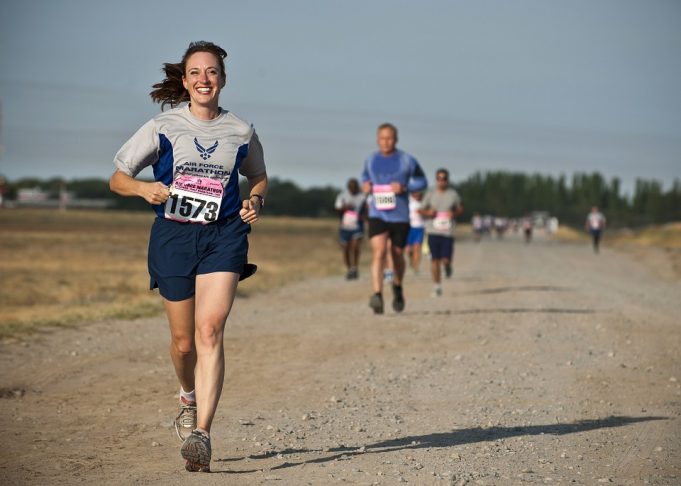People go for running, jogging or walking either for the purpose of exercising or for sports event. To ensure safe running and to prevent running injuries, plan the running program properly. The warm-up and stretching exercises are a must before you start running. Do the stretching exercise again after you finish running.
Always prefer to run in the early morning or evening. This is highly important in hot summers to avoid sun strokes. Avoid running at night. Do not run in traffic areas. Be conscious of your running environment in order to prevent injuries while you run. Try to run on clear, smooth, even, and almost soft surface. Avoid running on hills, which increases stress on the ankle and foot. When running on curved surfaces, change directions in forward movement, so that pressure on both feet is even.
Wear proper dress and footwear. Your dress material should provide insulation, absorb perspiration and moisture from skin and protect against wind and external moisture. While buying your running shoes, look for good shock absorption and construction that will provide stability and cushioning to the foot. Make sure that there is a minor gap between the end of the toe and the shoe. Replace your shoes when it loses the shock absorption capability.
Apply good sunscreen lotions or creams, wear sunglasses and hat with a visor if you are exposed to sun while running. During cold seasons, do not expose your skin. Wear gloves, full jackets and hat, and cover the neck. Petroleum jelly can be used on exposed areas, such as the nose.
Drink some fluid 10 to 15 minutes before running and every 20 to 30 minutes while you run. Dr. Lewis G. Maharam who is the world’s premier running physician, medical director of New York Road Runners, ING New York City Marathon, Elite Racing’s Musical Marathons and The Leukemia & Lymphoma Society’s Team and Chairman of the Board of Governors, International Marathon Medical Directors Association, said in an article “I can safely say that there is no substitute for a sports drink when exercising for more than 30 minutes. If you drink it — using thirst as your guide — you will truly be healthier and perform better”.
If you have asthma, you may find difficulty in running or exercising. Changing your diet and exercise habits can help asthma patients to run. Try to lose extra pounds to make you run more effectively, even with your asthma. Eat fresh vegetables rich in magnesium, avoid food items which trigger asthma attacks, drink eight and ten glasses of water every day, and stop smoking and drinking alcohol. Practice breathing exercises that will allow you to maintain proper breaths even while running. Know your limits and stop running if you get a tightening feeling in the chest. Always have your asthma inhaler with you at all times, especially when running or exercising.
According to experts, walking or running barefoot develops muscle strength in the feet, legs, and hips. Also it stretches and strengthens your calf muscles, improves your walking or running style and equilibrium. Many runners routinely finish their practice with barefoot running in the grass. But, if you have some serious medical ailments like poor circulation, diabetic neuropathy, and open crack or wound never run or walk with barefoot. For safe running with barefoot apply sunscreen to the tops and bottoms of your feet and avoid running on or near hazardous areas.
Don’t wear a headset or jewelry while running. Carry a whistle or other noisemaker. This will help you in emergency situations. If you are running alone, carry identification card or paper containing information such as your name, phone number, blood group, and medical information. Let your family members know where you will be running and taking rest. Have some money with you to make a phone call in emergency situations. Seek the advice of doctor within 24 hours if you are injured.
Article source: Expert Articles
















